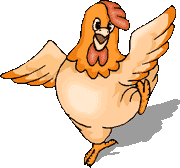
Little Red Hen
Centre for Early Childhood Care and Education
8 Lower Shantalla Road Galway
Email: katielrh1@gmail.com
Toddlers
Junior Montessori
Senior Montessori
After School
The Value of Play
Sand Play
Water Play
Heuristic Play
Small World Play
Computers
Montessori
Free Play
Circle Time
Policies & Procedures
Behaviour Management
Heuristic Play
The term "heuristic" comes from the Greek "eirisko", implying discovery. Heuristic play offers opportunities for children to explore objects and make discoveries, within a safe environment.
During a heuristic play session, play is supervised by adults but there is very little adult intervention. Instead young children are allowed to interact socially with other children of a similar age. It is often believed that children this age do not engage socially with their peers. Through heuristic play we have found that children DO interact socially with their peers, just on in the way we adults do. Instead they speak through eye-contact, simple sounds, single words and body language. Through heuristic play, a very young child will learn turn-taking, sharing and discovering with friends his or her own age and at their own pace.
During an heuristic play session, commercially bought toys are never offered to children. Rather a range of every day objects are used to enable children to do what they enjoy most - filling and emptying, slotting, selecting and discarding, recognising differences and similarities, building and balancing.
Material is abundant and so conflicts between children are rare. Materials include large containers of all shapes and sizes such as biscuit tins, cans, plastics bottles, egg boxes, cardboard and wooden boxes; objects which roll such as balls, pompoms, tubes, reels and rollers; assorted objects such as bundles of chain, jar lids, pine cones, ribbons, pieces of fabric, keys, bracelets, curtain rings and kitchen roll rods.
Objects which are offered to children appeal to the senses which are most dominant at this age. Children this age discover and explore new objects through the sense of touch. The texture of the object and how it feels in the child's hands is more important than its colour or the sounds it makes.
All of these object can be explored in an open-ended way, with no right or wrong result, in contrast to many commercial toys. Bracelets can easily be slotted onto and taken off the kitchen roll rod, in contrast to the shop-bought "rings on a peg" where graded rings will only fit in a particular order. Pine cones or shells can be put into and taken out of cans without having to first fit through a certain shape of slot.
With heuristic play the child cannot fail, because there is always more than one way of doing something.